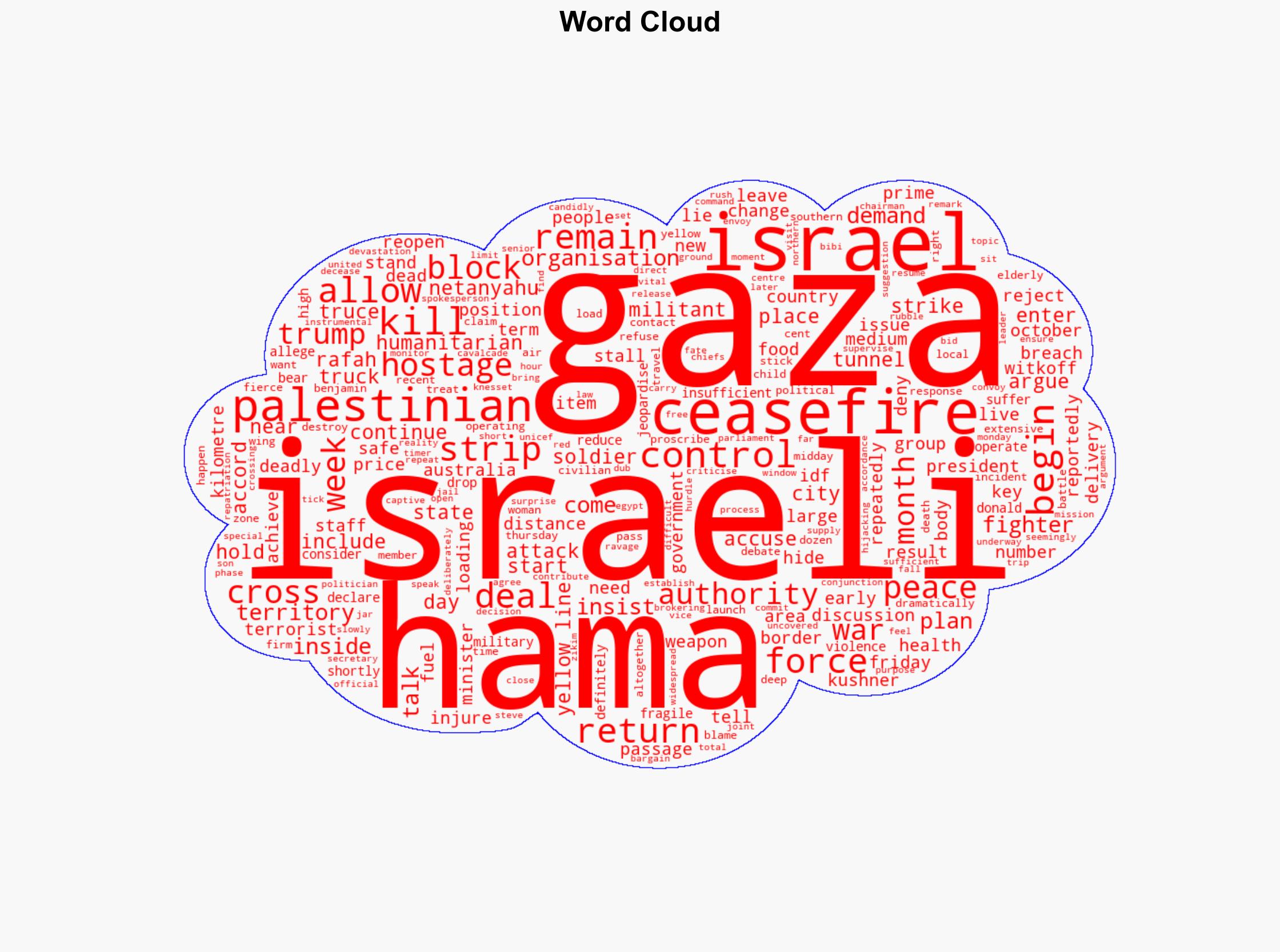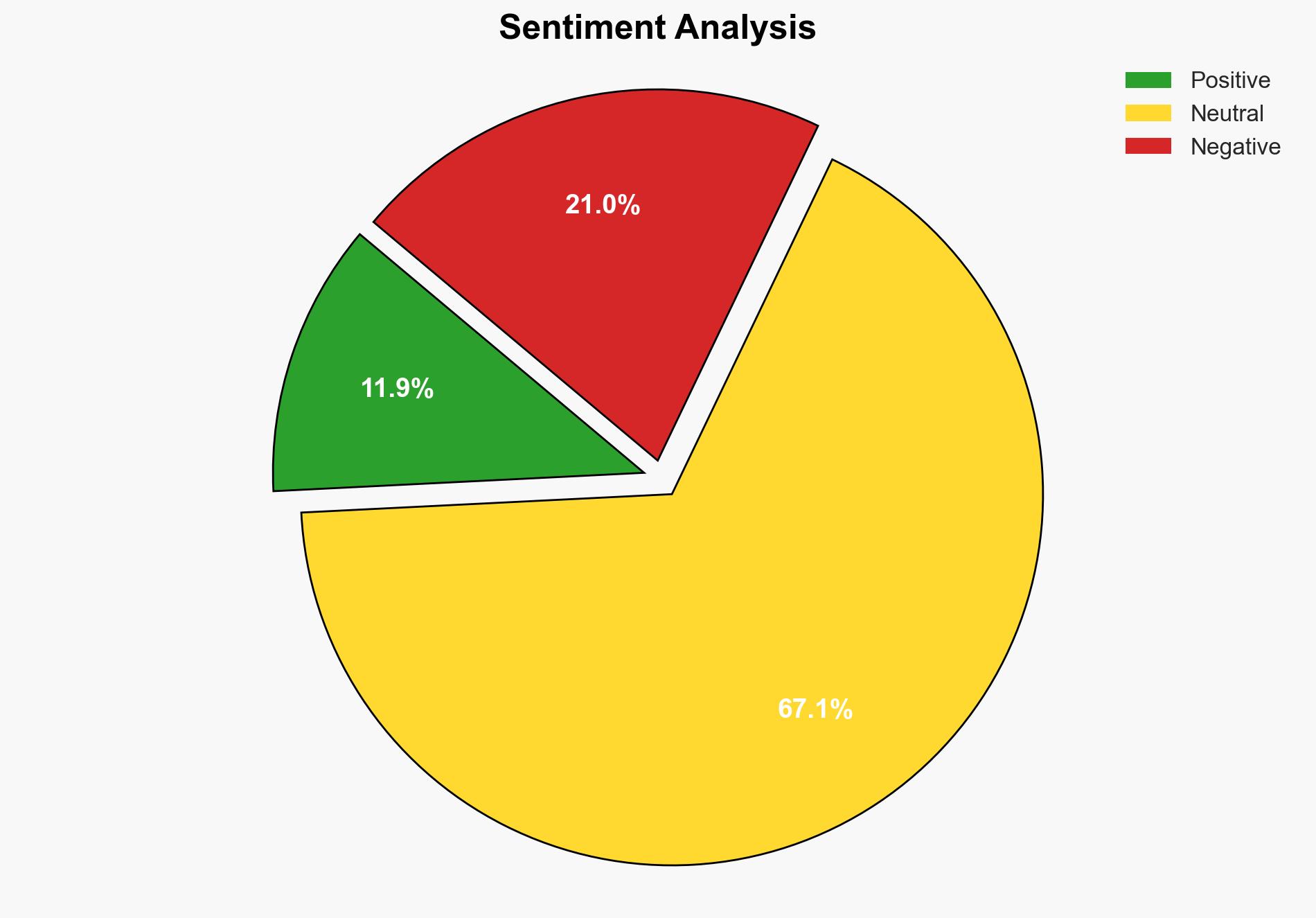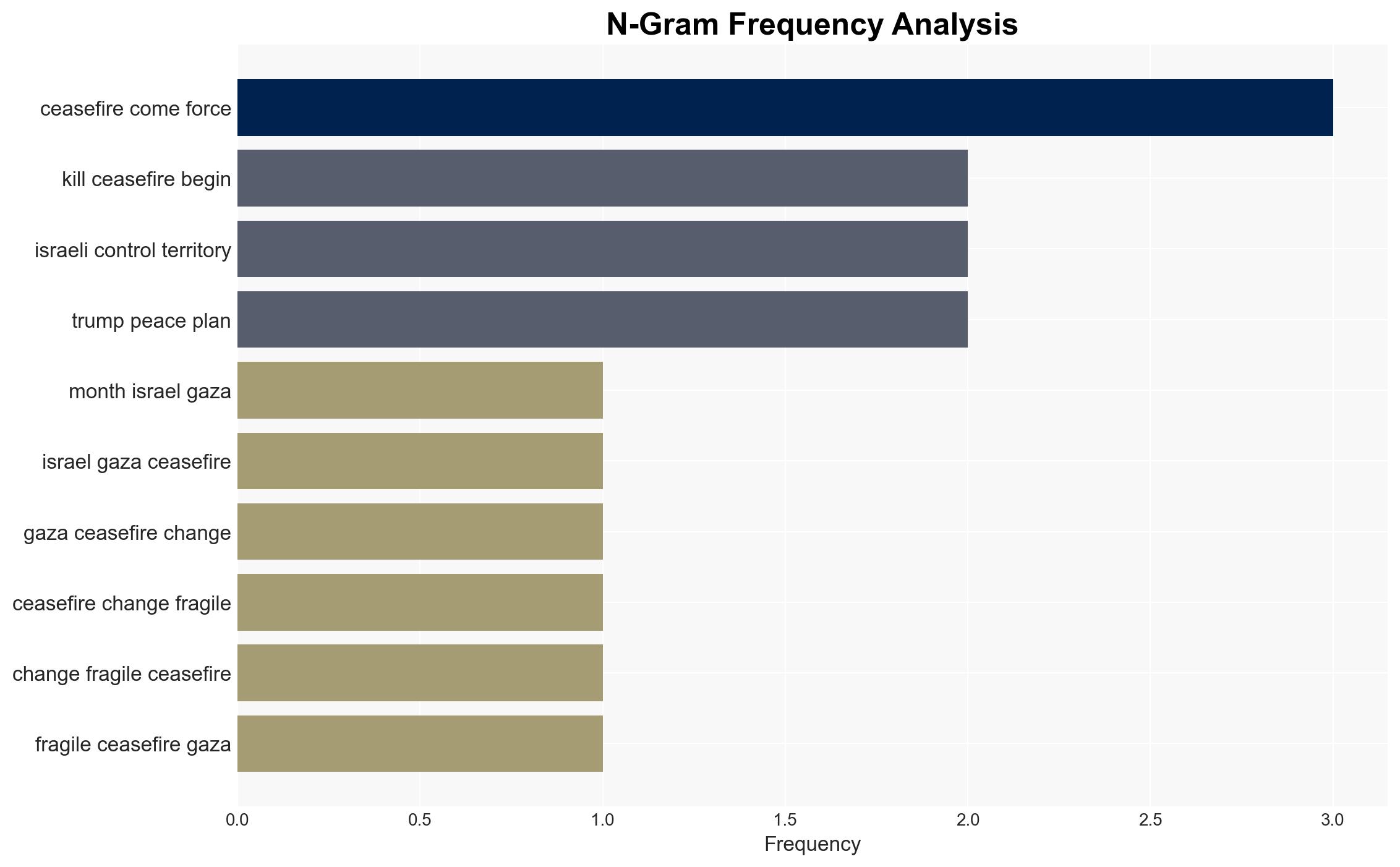How life in Gaza has changed since the ceasefire and how it hasn’t – ABC News (AU)
Published on: 2025-11-15
AI-powered OSINT brief from verified open sources. Automated NLP signal extraction with human verification. See our Methodology and Why WorldWideWatchers.
Intelligence Report: How life in Gaza has changed since the ceasefire and how it hasn’t – ABC News (AU)
1. BLUF (Bottom Line Up Front)
The ceasefire between Israel and Hamas has led to a reduction in large-scale violence, but tensions remain high with sporadic incidents continuing. The most supported hypothesis is that while the ceasefire has temporarily reduced hostilities, underlying issues remain unresolved, posing a risk of renewed conflict. Confidence Level: Moderate. Recommended action includes diplomatic engagement to address core issues and monitoring for signs of escalation.
2. Competing Hypotheses
Hypothesis 1: The ceasefire has effectively reduced hostilities and will lead to a longer-term peace process.
Hypothesis 2: The ceasefire is fragile and temporary, with underlying tensions likely to reignite conflict.
Assessment: Hypothesis 2 is more likely due to ongoing incidents, political rhetoric, and unresolved demands from both sides. The reduction in violence is significant but not comprehensive, and the political climate remains volatile.
3. Key Assumptions and Red Flags
Assumptions: The ceasefire terms are clear and agreed upon by both parties. External actors like the United States have leverage to enforce compliance.
Red Flags: Continued military activities and breaches by both sides, political instability within Israel and Gaza, and lack of progress in peace talks.
Deception Indicators: Public statements by both sides may not reflect true intentions, especially if used to gain strategic advantage.
4. Implications and Strategic Risks
The primary risk is the resumption of hostilities, which could lead to broader regional instability. Economic impacts in Gaza remain severe, potentially fueling further unrest. Politically, failure to address core issues could undermine future ceasefire agreements. Cyber and informational warfare could escalate as both sides seek to control narratives.
5. Recommendations and Outlook
- Actionable Steps: Engage in diplomatic efforts to address core grievances, increase humanitarian aid to Gaza, and support confidence-building measures between Israel and Hamas.
- Best Scenario: Ceasefire holds, leading to renewed peace talks and gradual easing of tensions.
- Worst Scenario: Breakdown of the ceasefire, leading to full-scale conflict and regional destabilization.
- Most-likely Scenario: Sporadic violence continues with intermittent diplomatic efforts failing to address core issues.
6. Key Individuals and Entities
Benjamin Netanyahu, Jared Kushner, Hamas leadership, Israeli Defense Forces (IDF).
7. Thematic Tags
Structured Analytic Techniques Applied
- ACH 2.0: Reconstruct likely threat actor intentions via hypothesis testing and structured refutation.
- Indicators Development: Track radicalization signals and propaganda patterns to anticipate operational planning.
- Narrative Pattern Analysis: Analyze spread/adaptation of ideological narratives for recruitment/incitement signals.
Explore more:
Counter-Terrorism Briefs ·
Daily Summary ·
Support us
·





